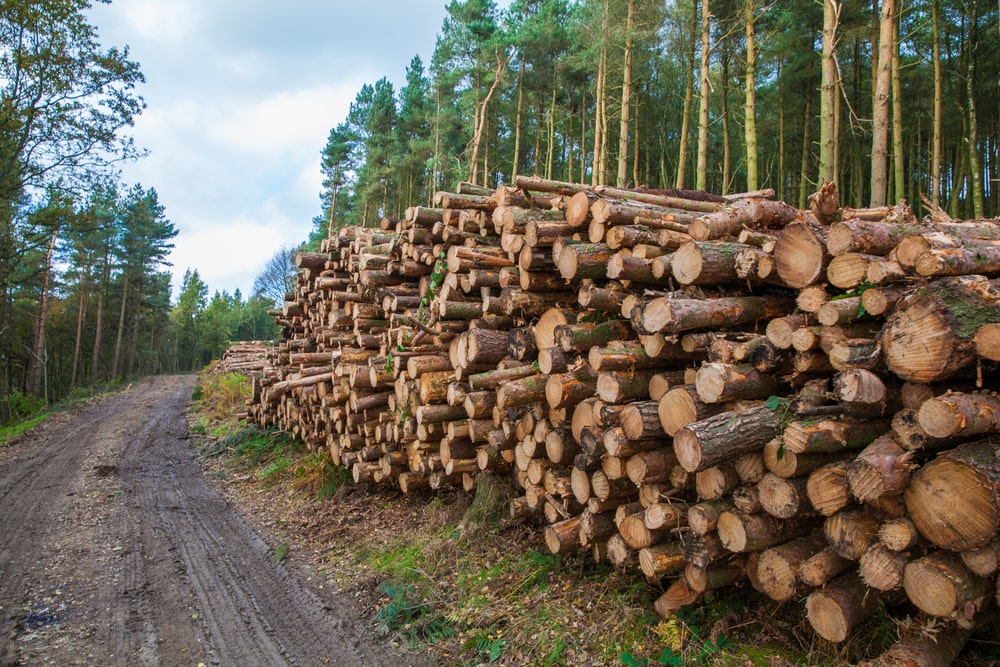Sector - Environment
The future importance of timber

The UK is one of the best places in the world to grow trees, yet we still import 88% of our timber requirements. In this article we speak with Olly Hughes, the Managing Director of Forestry at Gresham House, a sustainable asset management firm with the largest forestry portfolio in the UK about how timber can help the UK with sustainability goals.
We must plant more trees now to supply timber, support jobs and industry and create new and lasting biodiversity habitats for our native flora and fauna.
The construction industry accounts for 36% of all CO2 emissions in Europe (European Commission, 2019). Within the UK, the built environment is responsible for around 25% of total emissions (Environmental Audit Committee, 2022). The EU is looking to reduce construction emissions 90% by 2050 (European Commission, 2019), but the only way this target is going to be met is if we stop building altogether, or we find other solutions. Timber, we believe, has an important role to play. Not only is timber a natural resource, but it allows for quicker building times whilst less heat energy is used in production and post-construction, radically reducing emissions.
Understanding emissions in construction demands two lenses: production and operation.
Producing a tonne of steel and concrete requires 1,240 and 159 kilos of CO2 respectively, while producing a tonne of timber sequesters 1,700 kilos of carbon. Rather than generating carbon emissions, timber captures them. This sequestration occurs as the tree photosynthesises, converting carbon dioxide to stored carbon which remains in the wood when harvested. Considering the production of steel and concrete accounts for 8% of the annual anthropogenic greenhouse gas emissions, the increased use of wood will have a profound effect on worldwide carbon emissions (Gresham House, 2022).
When it comes to operating energy emissions, timber also benefits from superior insulation properties making it ten times more insulating than concrete and 400 times more insulating than steel (Gresham House, 2020). The use of gas and electricity to heat homes contributed to 20% of total UK emissions in 2021 (CCC, 2022). The adoption of superior insulating timber will lead to much lower emissions from the UK housing stock.
Not only does timber use in construction have environmental benefits, but it also boosts building capabilities. Energy-intensive materials like concrete, steel and aluminium have traditionally been used due to their cost, form and availability. Engineered timbers like CLT (Cross-Laminated Timber) have changed this. Timber is lighter and easier to work with than steel or concrete. This allows for off-site prefabrication, making for quicker build times and faster construction.
When we combine the elements of a quicker and more environmentally friendly build, not only do we start to address problems around climate change, but also the housing crisis where unaffordable housing and the increased average age of first-time buyers is at unprecedented levels. The UK has committed to building 300,000 homes a year by the mid-2020s (The Conservative and Unionist Party, 2019). If this is going to be met, timber is the catalyst for accelerating the process, whilst providing more environmentally friendly homes.
Despite the overwhelming benefits of timber in construction, we have a long way to go before we can make the most of it. The biggest hurdle is the amount of stock needed. The Climate Change Committee (2020) recommends increasing forestry cover to at least 17% of the UK by 2050, which would require planting around 30,000 hectares or more each year. The current level of cover stands at 13%, with around 14,000 hectares of newly created woodland planted in the UK in 2021-22 according to Forest Research (2022).
If we are to close this gap, the government needs to do more to incentivise the private sector to plant enough trees to support the level of harvesting needed to achieve the net-zero pathway. As we have seen from the Russian Invasion of Ukraine, relying on trade partners to deliver critical goods and services can be unforgiving. When considering the UK imports 88% of its wood requirements, there is a critical need to plant, as well as sustainably harvest UK trees (Gresham House, 2022).
The threat of climate change is no longer a prediction, but a reality that is being faced across the world. It is vital that the construction industry takes the necessary steps to reduce its carbon footprint, especially when there are options available to do so.
If you would like to read more stories like this, then please click here
Related Articles
More Environment News
- 151 new flood schemes delivered
4 Nov 25
government has delivered 151 new flood defence schemes in its first year
- Government commits to record levels of funding for flood resilience
24 Sep 25
A total of £2.65 billion is being spent over two years on new flood defences.
- COWI partners with University of Strathclyde to trial environmental DNA for sustainable infrastructure
18 Sep 25
COWI has partnered with the University of Strathclyde to trial the use of environmental DNA (eDNA)






